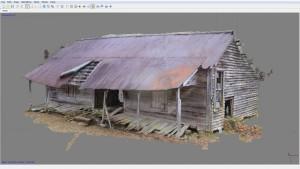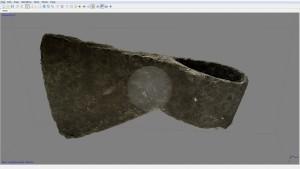 It’s interesting to think about how much technology is used to look back in time, so to speak. I still can’t wrap my mind around the fact that it’s possible to see back millions of years in space, but on a more earthbound level, technology is able to make even ancient history clearer and more tangible than ever before. 3D technology, in particular, allows us to restore ancient objects and even rebuild things that no longer exist.
It’s interesting to think about how much technology is used to look back in time, so to speak. I still can’t wrap my mind around the fact that it’s possible to see back millions of years in space, but on a more earthbound level, technology is able to make even ancient history clearer and more tangible than ever before. 3D technology, in particular, allows us to restore ancient objects and even rebuild things that no longer exist.
3D printing and scanning are just part of the arsenal of technology used by the University of Alabama’s Office of Archaeological Research (OAR) to bring the past into the present. We’ve written about archaeologists who have used 3D scanning and printing to reproduce and study fossils and ancient artifacts, but researchers at OAR have been using 3D modeling to reconstruct entire towns. Jeremiah Stager, a cultural resources assistant at OAR, was able to virtually rebuild an entire Alabama town as it existed in the early 20th century.
The Lay Dam began operation in 1914 and is still active today, one of the oldest hydroelectric dams in the country. A village grew around it to accommodate the construction workers who built the dam, along with their families. At the village’s peak, there were about three dozen homes, but today only two buildings are still standing – in the real world, that is. Alabama Power, which owns the dam, has maintained archival records, maps and architectural drawings from the dam’s construction, and Stager used these, along with hundreds of photographs kept by families whose ancestors lived in the village, to virtually rebuild almost the entire village. He then used the 3D models to create a virtual tour of the old village.“It brings archaeology, history and a little bit of anthropology together,” he said. “3D modeling really connects well with people, especially kids. When I’m excavating at a park and a group of visitors comes up to me, and I’m trying to show them the dirt stains, which we think are really interesting, sometimes it’s hard for people to envision what was there. With 3D modeling, I’m trying to tell a story, help them re-imagine what it was like.”

Dr. Andrew Graettinger, director of the UA 3D Printing Lab, discusses a design with a student. [University of Alabama]
Other technology utilized by OAR includes remote sensing, a ground penetrating radar that allows researchers to locate graves, prehistoric fire pits, and other underground anomalies; gradiometry, which produces higher-resolution images of items closer to the surface; and dendochronology, which involves ascertaining the age of wooden structures by measuring the number of tree rings in the wood used to build them. It’s not an exact science, but it can give researchers a better idea of the history of a structure than they would have had otherwise.“Sometimes artifacts break,” Stager said. “It would be good to get a good scan and then print them while they are still whole. It would also provide a better experience for museum visitors. While having the ‘real’ artifact behind a case looks cool, and it’s really neat to look at or read about, being able to interact with it often gives people a much better experience. It is a huge tool in connecting with the public.”
As technology continues to advance, OAR and other archaeological organizations will continue to use every method they can to discover and preserve pieces of the past that otherwise may have been lost forever. There’s still so much that we don’t know, but as time moves forward, the past is becoming much more visible. Discuss this story in the Rebuilding History forum on 3DPB.com.
Subscribe to Our Email Newsletter
Stay up-to-date on all the latest news from the 3D printing industry and receive information and offers from third party vendors.
You May Also Like
Profiling a Construction 3D Printing Pioneer: US Army Corps of Engineers’ Megan Kreiger
The world of construction 3D printing is still so new that the true experts can probably be counted on two hands. Among them is Megan Kreiger, Portfolio Manager of Additive...
US Army Corps of Engineers Taps Lincoln Electric & Eaton for Largest 3D Printed US Civil Works Part
The Soo Locks sit on the US-Canadian border, enabling maritime travel between Lake Superior and Lake Huron, from which ships can reach the rest of the Great Lakes. Crafts carrying...
Construction 3D Printing CEO Reflects on Being Female in Construction
Natalie Wadley, CEO of ChangeMaker3D, could hear the words of her daughter sitting next to her resounding in her head. “Mum, MUM, you’ve won!” Wadley had just won the prestigious...
1Print to Commercialize 3D Printed Coastal Resilience Solutions
1Print, a company that specializes in deploying additive construction (AC) for infrastructure projects, has entered an agreement with the University of Miami (UM) to accelerate commercialization of the SEAHIVE shoreline...































